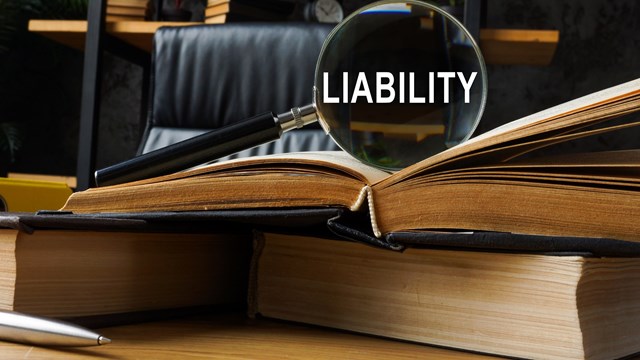
Protection against embezzlement, fraud, theft, computer crime, forgery and more are just the tip of the iceberg when it comes to crimes at community associations across the United States. During challenging economic times, crime goes up and the community association industry has felt the increase along with the rest of the country.
Protect Yourself
How can a community association protect itself from crime? A crime policy, also known as fidelity bond is one of the ways an association’s assets can be safeguarded. In addition to the crimes listed above, community associations are seeing crimes such as wire funds transfer, check forgery, fictitious invoice, and unauthorized use of credit cards among other things. Later in the article I will give some tips that board members should know when it comes to the claim process and the best way to proceed if a crime does in fact occur.
There are some common terms used by insurance companies related to crime insurance which are crucial for board members to understand.
Employee Theft: Crime insurance covers direct loss of money, security, and property caused by theft or forgery by an employee. When you define employee it is important to note that the person has to be compensated by wages and that the definition of employee should also be extended to cover non-compensated board members and community association managers.
Computer crimeincludes coverage for loss of money, securities and other property caused by computer fraud. Since everyone uses computers this type of crime has become much more prevalent than in the past. This would apply when someone obtains the password to an employee’s office computer and embezzles money, etc.
Funds Transfer is described as when someone other than the owner of a password uses an employee’s password on an “off-premises” computer to embezzle funds. This type of coverage covers loss of money and securities.
Forgery or Alterationis a loss that happens when association documents and/or checks are forged. This is a growing crime due to the fact that technology has made it easier for to replicate documents/checks and since it’s easier to do more criminals are attempting it.
As mentioned earlier, there are some crime trends currently impacting community associations. Let’s take a look at examples of the areas where claims are hitting community associations the hardest.
Funds Transfer- An example of this is when an association treasurer received an email that contained a virus. The virus obtained the user’s ID and password to the association’s bank account. An electronic wire transfer was initiated which caused $147,000 to be wired to a bank in Arizona.
Check Forgery- An association board member made checks payable to herself and forged the signatures of the other board members.
Fictitious Invoice-An employee embezzled by generating and approving for payment a series of false and inflated invoices, expense reports and personal credit cards.
Unauthorized Use of Charge Cards-A maintenance supervisor made unauthorized charges on a charge card in the association’s name.
Theft of Property by an Employee- Two former employees stole 52 appliances from insured property, including 9 dishwashers, 19 ranges, 26 refrigerators and 1 washer.
Theft by a Third-Party-An employee of a sub-contract valet service ran up long distance bills of $3,400.
What Can You Do?
Now, what should you do if one of these losses listed above occurs at your association?
There are several steps a board member should take related to their insurance policy in the event of a crime.
1. Notification of Insurance Broker and Insurance Company-You can either call, email, fax, file a lawsuit, or submit an accord loss form (an insurance document you can obtain from your broker) to report the loss to your broker who will then notify the insurance company.
2. Coverage Verification-Once the insurance company is notified they will appoint a claims examiner. This person will verify the coverage your association has in place by reviewing the underwriting file. They will copy key documents, verify effective dates, limits, deductibles, and endorsements.
3. Acknowledgement Letter-The claims examiner then sends an acknowledgement letter to the insured stating that the claims examiner is handling their claim. The letter also states if the insured has any questions or concerns relating to the coverage to please contact them.
4. Receipt and Analysis-The claims examiner will also send a Proof of Loss form to be completed by the insured. Some of the questions on the Proof of Loss form will include the following:
• It asks for a detailed explanation of the claim by the insured.
• Is there supporting documentation for the amount claimed?
• Is it signed by the authorized individual and notarized?
• Is there a police report available and if so, it should be attached.
5. Disposal of Claim
When the investigation is complete, the claims examiner has 4 options.
1. Accept and pay-If the claim is fully documented and the coverage covers all aspects of it, the claims examiner will issue a check in exchange for a release by the association. The release closes the claim and gives all rights to the insurance company to go after the accused for the money.
2. Reject and deny-A denial letter is prepared if the loss does not qualify for coverage under the policy.
3. Compromise-Sometimes a claim cannot be fully documented; however the benefit of doubt lies with the association. In these cases, a compromise agreement might be reached with the association to resolve the claim.
4. Salvage-The insurance company is always looking for ways to get back the money they paid on the claim. Sometimes there are others that may have some degree of responsibility in the claim. If that is the case, the insurance company will take a look at all aspects of what roles various people played and look to regain some of the money lost.
No one wants to be the victim of a crime, however with a crime insurance policy and some knowledge of how the claims process works, it does give you some peace of mind in the event your community association is affected by crime.
Sherry Branson is the marketing project manager for Kevin Davis Insurance, a nationwide insurer based in Los Angeles, California.






Leave a Comment